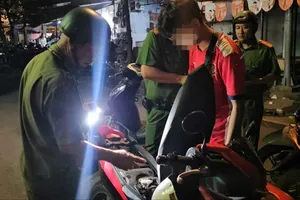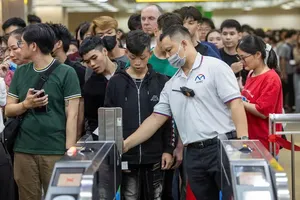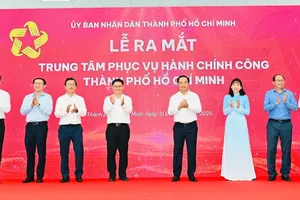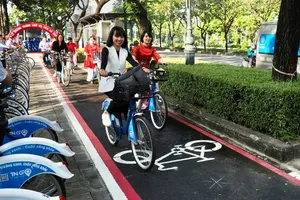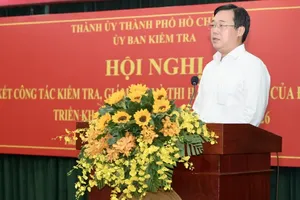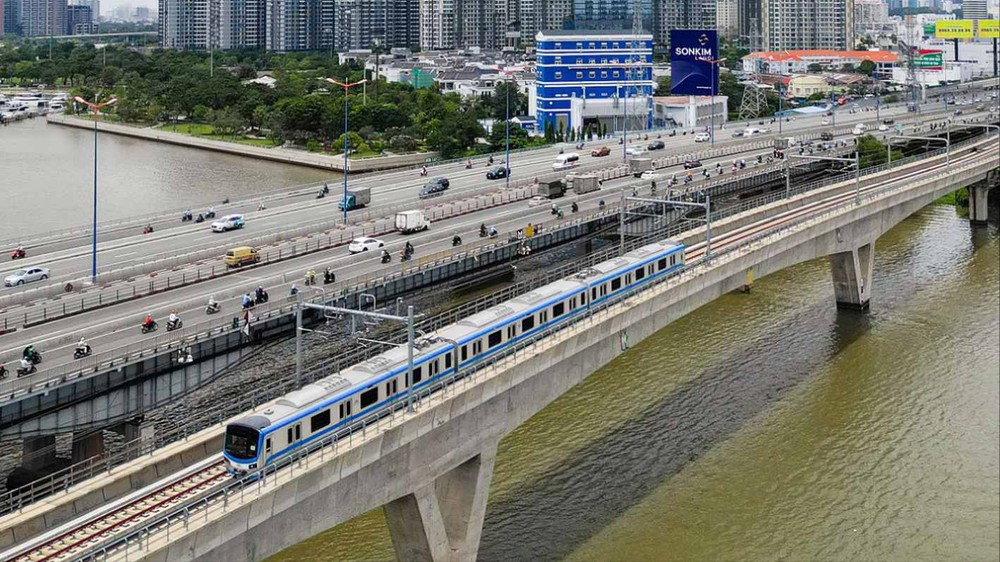
Inadequate and overloaded infrastructure is a major bottleneck hindering Ho Chi Minh City's development. Social contributions play a pivotal role in carrying out infrastructure development projects.
Director of the Transportation Works Construction Investment Project Management Board of HCMC Luong Minh Phuc said that city leaders have determined that the key task of the traffic industry in the coming time is to create infrastructure breakthroughs.
This year, the transport sector was assigned to disburse for many key projects such as Nguyen Khoai Bridge and Road, the Ring Road 2 project, Binh Tien Bridge and Road, Ba Hom Bridge, Tan Ky Tan Quy Bridge, Duong Quang Ham Bridge, Phuoc Long Bridge, Rach Dia Bridge.
Regarding the implementation of projects, Director of the Department of Transport Tran Quang Lam said that a series of large projects have been approved, and the city will prioritize capital to soon complete the Ring Road 2. At the same time, five BOT projects at the gateways of Ho Chi Minh City, connecting ring roads such as Binh Tien Road and Bridge, the North-South Expressway axis, the National Highway 1, the National Highway 13, the National Highway 22 have also been approved by the Ho Chi Minh City People's Council.
The Department of Transport continues carrying out pre-feasibility study reports for large-scale projects such as Can Gio Bridge, Thu Thiem 4 Bridge, and a number of BOT projects on existing roads according to the NA's Resolution 98. The Department will also appraise and adjust about 23 key projects such as Ho Chi Minh City - Moc Bai expressway; ring roads as well as upgrade and expand Nguyen Duy Trinh Street in the stretch from Ring Road 2 to the road and to Phu Huu Industrial Park.
Simultaneously, the transport and traffic sectors will closely work to implement five gateway traffic projects in the form of BOT. Specifically, the two sectors will upgrade and improve National Highway 1A, National Highway 13, National Highway 22 and construct Binh Tien Bridge and Road with a total estimated investment of about VND44,592 billion (US$1,762,109,060) from 2024 to 2030.
In addition to the above projects, the southern largest city has already had plans for metro lines spanning a total of 220km with an estimated investment capital of US$25 billion. However, Deputy Head of the Ho Chi Minh City Urban Railway Management Board Nguyen Quoc Hien said that up to now, mobilized capital in the form of ODA for urban railway construction investment projects in Ho Chi Minh City including ongoing projects and future projects is about $6 billion reaching about 25 percent of the total investment, according to the Management Authority for Urban Railways (MAUR)’s statistics.
The Department of Transport of Ho Chi Minh City said that in the period 2022-2025, the total budget for key investment projects to develop infrastructure in Ho Chi Minh City is expected to be VND243,000 billion. Of these, VND103,000 billion will be for metro construction investment projects accounting for about 43 percent. Meanwhile, the annual approved budget for inner-city infrastructure projects is only about VND30,000 billion.
The limited budget has hindered the implementation of projects in recent times. For instance, the total proposed capital for the education sector from Ho Chi Minh City's state budget for the period 2023-2025 is VND32,200 billion. The amount will be used for 277 projects supplying 5,934 classrooms. To implement the plan to build 4,500 new classrooms, Ho Chi Minh City presently has 110 projects providing 2,638 classrooms with an estimated capital of VND517 billion from social contributions, public-private partnerships, and a stimulus package.
The Ho Chi Minh City People's Committee admitted social contributions have not been exploited due to the lack of attractive policies and many difficulties in planning, leading to limitations in promoting financial mobilizations for school construction.
Furthermore, the spending for relocation of dilapidated houses along canals is very limited. Therefore, according to the Department of Construction, the city’s goal to give compensation for the removal of 6,500 houses on and along the canal is impossible.
The Department of Construction continued to propose to the municipal City People's Committee to allocate capital of VND37,000 billion to relocate houses on and along the canal. Meanwhile, the development of parks and urban greenery also lacks capital, so the city is unlikely to achieve its goals.
As per its goals, from 2020 to 2025, Ho Chi Minh City aims to add 150 hectares of parks. To do so, it is necessary to implement at least 54 projects, with a budget of more than VND9,000 billion. But to date, only four investment projects with a total cost of VND1,590 billion have been approved by the Ho Chi Minh City People's Council.
While state budget resources are limited, social financial resources are still very abundant as per the government’s assessment. However, appropriate policies and mechanisms are requisite for the appeal of social contributions to infrastructure development projects. While public investment capital has not been able to allocate enough capital for projects, the city administration has been tardy in calling for social contributions to infrastructure development.
As a result, investment in developing green parks has not been implemented yet, because according to the provisions of the Law on Investment in the form of public-private partnerships, green parks are not in the field of investment in this method. In other fields, the actual implementation of investment projects in the form of public-private partnerships faces many difficulties, many violations are discovered and handled resulting in implementation lags.
To mobilize infrastructure investment capital and reduce ODA loans, Chairman Tran Du Lich of the Advisory Council for the Implementation of the National Assembly’s Resolution No.98/2023/QH15 proposed that Ho Chi Minh City issue international bonds.
In his opinion, the issuance of international bonds has been proposed by the city government but it has not been included in the Resolution 98 so that the city can study how to carry out this. Specifically, according to the Resolution 98, the city should report about its strategies to attract investment and mobilization of internal and external resources to the government that will submit to the National Assembly for consideration. Issuance of international bonds is a crucial point to help increase the city’s financial resources so that the city can soon complete the metro system.

